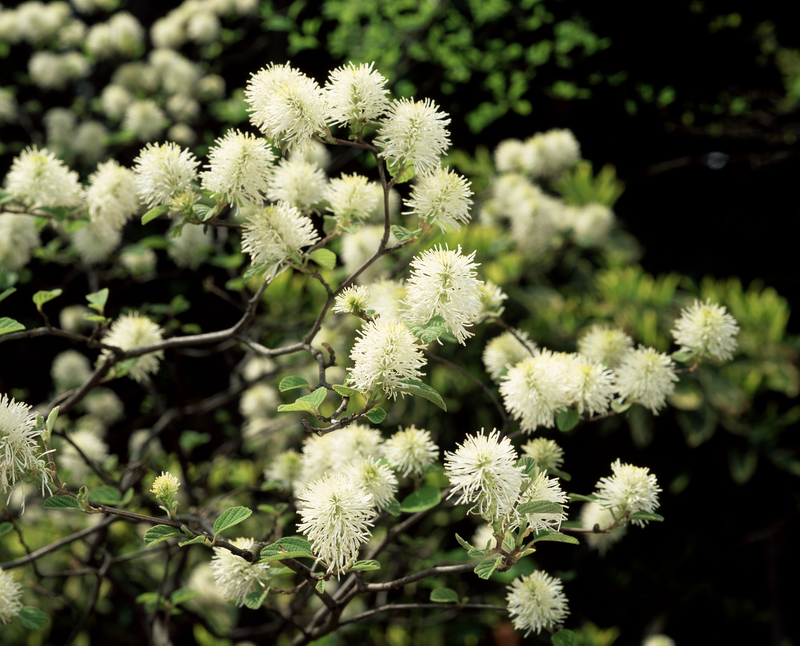Maximize Your Lawn's Resilience Against Summer Drought
As temperatures soar and rainfall wanes, homeowners everywhere worry about their once-lush lawns drying up and turning brown. Maximizing your lawn's resilience against summer drought is not only beneficial for your landscape's beauty but also an essential step in water conservation and responsible yard management. This comprehensive guide will walk you through proven strategies and tips to keep your lawn healthy, green, and strong--even during the harshest heatwaves.
Understanding Drought Stress in Lawns
Drought stress occurs when your lawn receives less water than it needs for growth and survival. The signs of drought stress can include:
- Wilting or folded grass blades
- A bluish-gray hue to the turf
- Footprints or mower tracks remaining visible
- Slow-growing or dormant grass
Recognizing these early indicators helps you take action before irreversible damage sets in. Let's delve into the steps for creating a drought-tolerant lawn.

Choose the Right Grass Species for Drought Tolerance
Not all grasses are created equal when it comes to tolerating dry conditions. Some turfgrasses possess natural adaptations--such as deep root systems or efficient water use--that make them better suited for drought conditions. Consider the following lawn grass types if you live in an area prone to summer drought:
- Bermuda Grass: Exceptionally drought-resistant warm-season variety
- Zoysia Grass: Deep roots and thick texture retain moisture
- Tall Fescue: Cool-season grass with deep roots
- Buffalograss: Native prairie grass highly adapted to dry spells
When establishing a new lawn or overseeding an existing one, opt for varieties known for drought-hardiness. This proactive choice forms the foundation for a lawn that remains vibrant in extreme heat.
Water Wisely and Effectively
Efficient irrigation is critical for drought defense. Here are expert watering tips to maximize your lawn's drought resilience:
1. Water Deeply, Not Frequently
- Apply 1 to 1.5 inches of water per week, preferably in one or two deep sessions.
- Deep watering encourages grass roots to grow downward, where soil stays moist longer.
2. Water Early in the Morning
- Water between 4 a.m. and 9 a.m. to minimize evaporation losses.
- This also reduces the risk of fungal diseases caused by nighttime moisture.
3. Use Efficient Irrigation Systems
- Install sprinklers that deliver even coverage and adjust them to avoid watering sidewalks and driveways.
- Consider drip irrigation for areas with mixed planting.
- Use smart timers and rain sensors to optimize watering schedules.
Improve Your Soil's Water Retention
Soil health plays a crucial role in your lawn's drought tolerance. Healthy soils absorb and retain water more efficiently, making moisture available to grass roots during dry periods.
- Aerate the Lawn Regularly: Core aeration reduces compaction, promotes root growth, and enhances water absorption.
- Amend with Organic Matter: Topdress your soil with compost to improve structure and water-holding capacity.
- Test Soil pH and Nutrients: Ensure your lawn's soil is not overly acidic or lacking essential minerals.
Pro Tip:
Apply a thin, half-inch layer of compost each spring to nourish soil and boost long-term moisture resilience.
Adopt Smart Mowing Practices
Mowing your lawn properly is another key factor in withstanding summer drought. Poor mowing habits can stress grass and increase water loss.
- Raise Your Mower Blade: Set the mower to cut at the highest recommended height for your grass species. Longer grass blades shade the soil, reducing evaporation and promoting deeper root growth.
- Don't Cut More Than One-Third: Remove no more than one-third of the grass blade's height in a single mowing. Drastic cuts weaken the turf.
- Leave Grass Clippings: Mulched clippings return nutrients to the soil and help retain moisture.
Fertilize Appropriately
Excessive fertilization can force lush, shallow-rooted growth that's vulnerable to drought. Instead, follow these guidelines for fertilizing for drought resistance:
- Fertilize in spring or early fall, not during peak drought periods.
- Choose slow-release organic fertilizers that gradually nourish your lawn without burning the grass.
- Test your soil to determine the exact nutrient needs before applying fertilizer.
Master Mulching for Turf Health
Mulching isn't just for flowerbeds. In fact, mulching plays a major role in maximizing your lawn's drought resistance.
Why Mulch Grass Clippings?
- Returns water-holding organic matter to the soil
- Insulates grass roots from extreme heat
- Reduces weed growth that competes for moisture
If you use a bagging mower, consider switching to a mulching blade that finely chops clippings and returns them to the turf. This simple switch can make a tangible difference during dry spells.
Control Weeds and Pests Proactively
Weeds and pests stress your lawn, competing for limited resources and further weakening grass during drought. Maximize resilience by staying vigilant:
- Regularly pull or spot-treat weeds before they spread.
- Inspect for signs of insect infestation and treat as needed.
- Maintain a thick, healthy turf to naturally crowd out weeds and deter pests.
Embrace Lawn Dormancy When Necessary
Naturally, all lawns go dormant during prolonged, severe droughts. The grass may turn brown, but this is a natural survival mechanism. Do not panic or overwater--most established lawns will recover when rainfall returns.
- Keep dormant fescue and bluegrass lawns alive by watering just enough to prevent complete die-off (about half an inch every 3-4 weeks).
- Avoid heavy foot traffic on dormant turf to protect fragile crowns and roots.
Consider Lawn Alternatives for Ultimate Drought Resilience
If your area regularly experiences severe water shortages, it may be time to rethink your lawn altogether. Here are some smart alternatives:
- Xeriscape with drought-resistant groundcovers, ornamental grasses, or native plants.
- Use artificial turf for high-traffic play areas.
- Integrate hardscapes--patios, walkways, and mulch beds--reducing the area of water-thirsty turf.
Transitioning portions of your yard to low-water landscaping can dramatically improve your property's drought tolerance and sustainability.
Regular Maintenance for Enhanced Drought Survival
Small but regular tasks allow your lawn to thrive under pressure. Stay consistent with the following:
- Monitor irrigation systems for leaks or blockages
- Keep mower blades sharp for clean cuts
- Remove thatch layers that block water penetration
Timely, attentive maintenance is a cornerstone of lawn resilience against summer drought.

Frequently Asked Questions About Keeping Lawns Healthy During Drought
How often should I water my lawn during a drought?
Water deeply but infrequently--typically once per week with 1 to 1.5 inches of water. Start early in the morning for best absorption.
Is it okay to fertilize my lawn during drought?
It is better to avoid fertilizing during severe droughts. Wait until cooler, wetter weather or use organic, slow-release products sparingly.
Will my brown lawn recover after summer drought?
Most established lawns will recover once regular rainfall resumes. However, if the turf is dead down to the crown, reseeding or overseeding may be necessary.
Are there eco-friendly ways to maintain a drought-resistant lawn?
Yes. Use rain barrels to capture water for irrigation, spread mulch, overseed with drought-tolerant species, and reduce your total area of turf with native plants and hardscape.
Conclusion: Build a Tougher, Greener Lawn--Even in the Driest Months
Maximizing your lawn's resilience against summer drought isn't about one magic solution--it's about layering thoughtful, sustainable practices all season long. By selecting the right grass, mastering efficient watering, improving soil health, mowing correctly, fertilizing wisely, and embracing adaptive strategies, you'll create a landscape that stands strong--no matter how hot or dry it gets. Start implementing these tips today, and enjoy a green, vibrant lawn that remains the envy of the neighborhood, even in the fiercest summer heat.